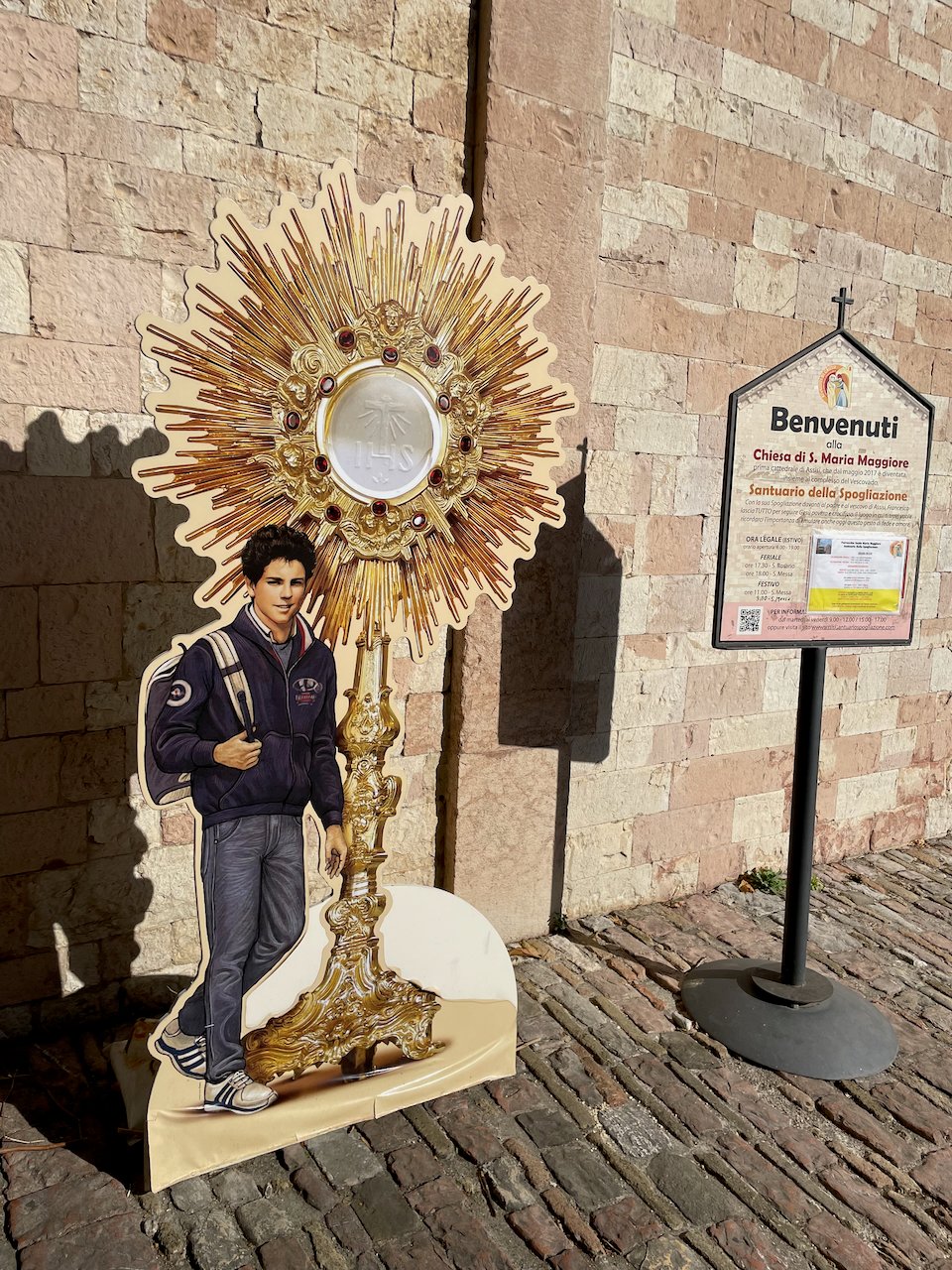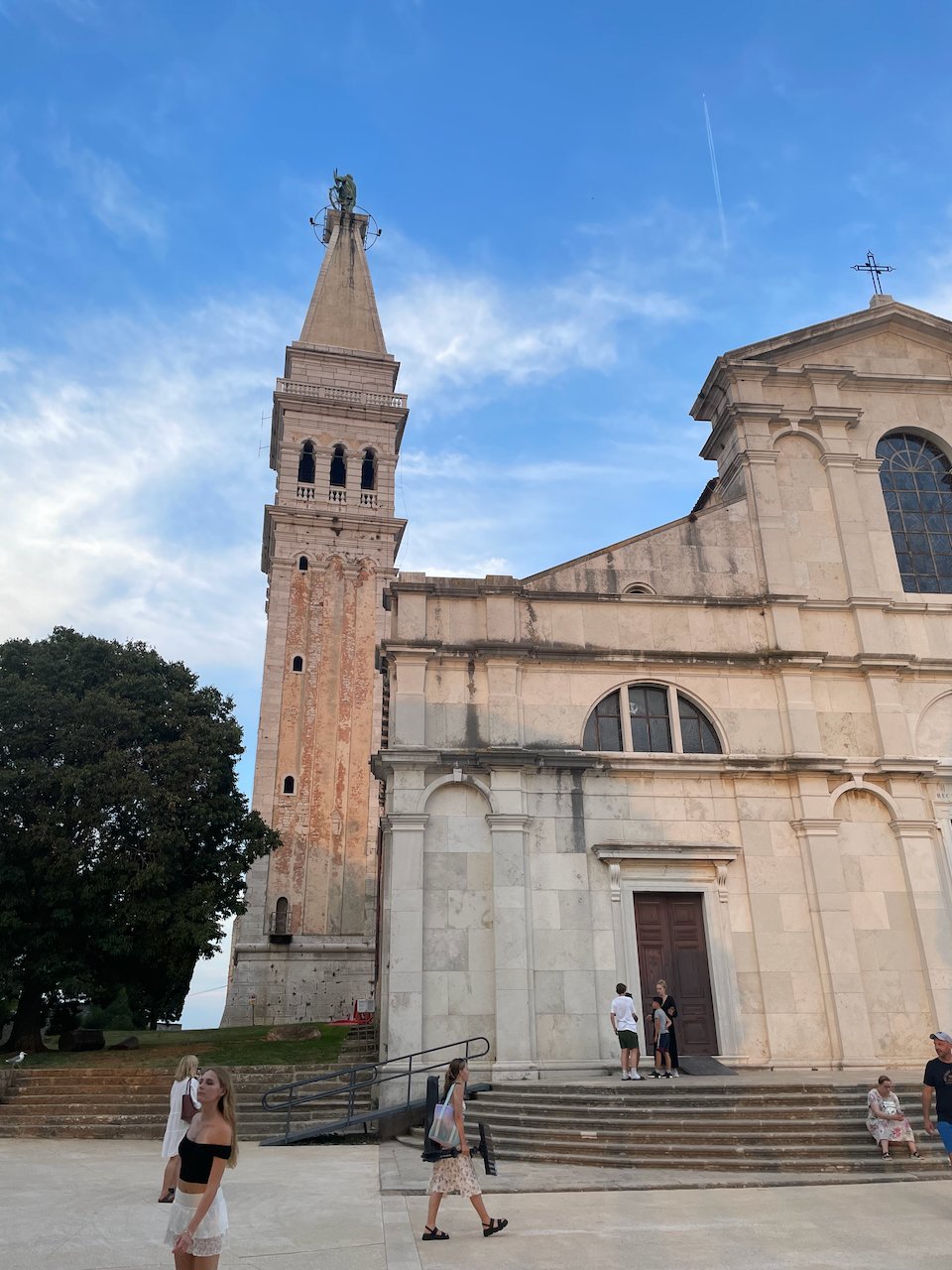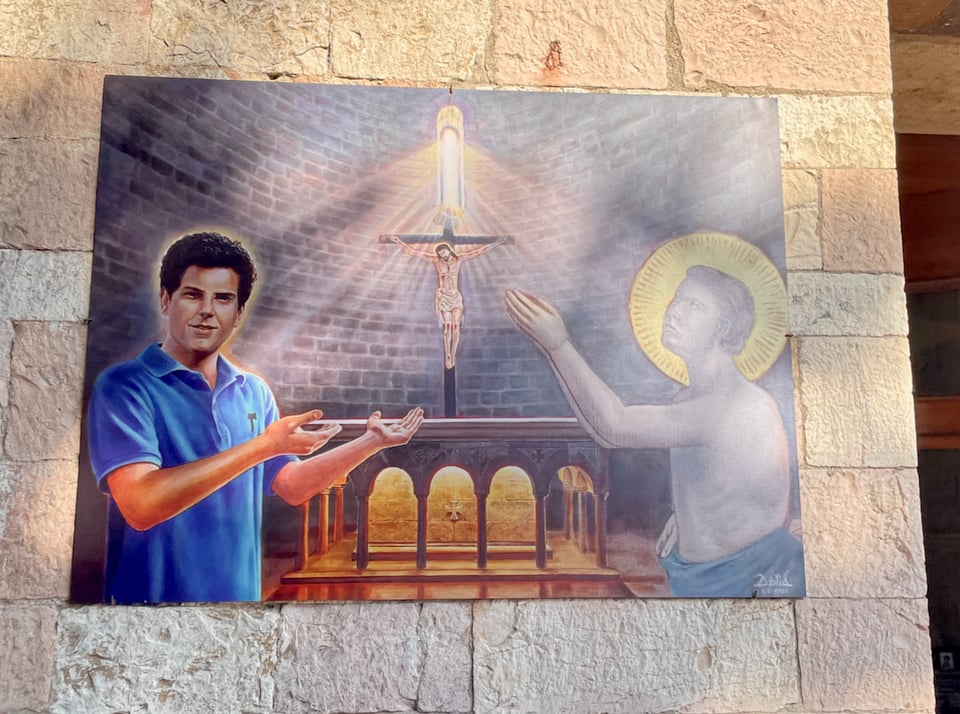Saints that were among us - #9
As the world’s Catholics mourn the end of one papacy and celebrate the beginning of another, the story of how Carlo Acutis is on track to become “the first millennial saint” reveals much about what we look for in faith.

I wasn’t exactly up to speed on modern saint-making last summer when I spent a day in Assisi — and stumbled straight into the full-throttle celebration of Carlo Acutis’s impending canonization. Images of this otherwise ordinary-looking Italian teenager were everywhere: on prayer cards, book covers, and t-shirts. His face, frozen in slightly grainy digital photos from before his death in 2006, was the kind any Italian grandmother would be proud to see on her mantel — still boyish, just on the verge of unthreatening young manhood. It was a perfect Catholic moment: solemn, sincere, and more than a little bit weird.
The past few weeks have been a showcase for this kind of otherworldliness crashing into public consciousness, as we lost one pope and gained another. The spectacle briefly pushed Carlo out of the spotlight — Pope Francis was set to formally canonize him on April 27, but that’s now on hold. Still, the Church’s intentions are clear: Carlo is being positioned as the “first millennial saint,” readymade to preside over the Internet. He’s the patron you might pray to when your Wi-Fi goes down. It’s a surprisingly forward-looking move for the Vatican, an institution not exactly known for adapting quickly to modernity. But it also signals a deeper shift in power. From the outside, nothing looks more top-down than the Roman Catholic Church — a divine chain of command flowing from the three-part God, through the papacy unbroken since Saint Peter, down to the dioceses, the parishes, the families, the faithful. But sometimes the current flows the other way. Especially since Pope John Paul II relaxed the rules in the 1980s, the process of sainthood—once a matter of centuries — can now unfold in real time.
Carlo has climbed the ladder quickly — especially since his beatification in 2020 and the transfer of his earthly remains to Assisi, already one of the holiest cities in the Catholic world. He reportedly spent a few childhood summers there, and now he rests in Santa Maria Maggiore, one of the smaller churches in this town crowded with them — yet without a doubt, he’s become the main attraction. For an American, coming from a largely relic-free religious culture, the sheer abundance of saints’ tongues, hearts, and scalps scattered across Italy can be jarring. But even so, seeing Carlo’s actual body on display in a glass sarcophagus is a shock. Tucked off to the side of the sanctuary, he wears a navy track jacket, jeans, and Nikes—your average European teenager, maybe just a little dated. He’s well-preserved: in keeping with Italian tradition, his face and hands are covered in a layer of wax and silicone, making him look exactly like his photos. And yet, he draws a steady stream of visitors. From what I saw, mostly women old enough to be his mother or grandmother — praying but also, unmistakably, just gazing.

There’s a real energy around Carlo that you don’t feel at the shrine of St. Francis up the hill, or at St. Clare’s just a few blocks away, or even in the Romanesque Cathedral of San Rufino — where Carlo’s heart is now enshrined as a relic. His shrine hums with a sense of immediacy, even novelty. But it also fits seamlessly into the long arc of Assisi’s spiritual history, almost as if by design. This is the city where Francis transformed from a street-fighting rich kid into a barefoot mystic, guided by visions in a crumbling church at the base of the hill. There, you can see the original chapel and the massive basilica built around it — the raw beginning and the monumental aftermath, preserved together in stone.
The emerging cult (that’s their word) of Saint Carlo is like High Middle Ages pop culture falling in our midst. Until the 12th century the Vatican wasn’t involved at all in picking saints, but for hundreds of years it had spiraled so far out of control it became a part of the Reformation critique about the worldly silliness and frivolity of the Roman Church. They reigned in the process with procedures more legalistic and scientific in their backward way, with Church investigations led by the Dicastery for the Causes of Saints, and features like the “devil’s advocate” who would try to debunk claims.
A recent article in The Economist outlines how all of this applies to the curious case of Carlo Acutis — a computer-savvy teenager from a wealthy Milanese family whose cause for sainthood has moved with unusual speed. Accounts differ on whether he was truly devout or just exceptionally kind, but the Church seems persuaded by details like the online database he built cataloging Eucharistic miracles, and by his discomfort with the idea of premarital sex (the dicastery even examined his browsing history). Even his most devoted supporters acknowledge that Carlo was, in many ways, a normal kid: he liked video games, cars, and hanging out with friends. And that may be the point. “What Carlo Acutis shows us is that the Gospel is not disconnected from reality,” writes Jaymie Stuart Wolfe in the Catholic Review. “A completely ordinary life in our world can be holy.”
Carlo was only 15 when he died in a terribly heartbreaking way. Just a week after coming home from school with a sore throat, he passed away from a hideous and aggressive form of leukemia. His mom, who was the first and most ardent to make the sainthood claim, clearly suffered in unimaginable ways. From her others took up the cause, and his relics have been credited with two miracles — healed children in Brazil and Costa Rica — which was enough for Pope Francis.
This is all a tradition a grew up knowing about, but never got to see up close. Here is where I disclose that I grew up Catholic, including going to a parochial elementary and middle school, serving as an altar boy, and getting right up to Confirmation. Today, I have to identify as ethnically, possibly culturally, Catholic, though the enormity of the Church’s crimes against children makes it a human project I can’t align myself to. So I’m left in a strange twilight space. Any time I’m in an art museum or an old church I’m grateful for all the Bible history I was regularly served. I have a bemused sense of the errancy of Protestantism, which stripped all the best parts of the Church tradition as well as many of the guardrails that steer away from snake-handling and Jonestown. And I have a deep impatience and contempt for adult converts (especially the American ones) guided by hate who cling to the very worst parts of it. But politics and other worldly things aside, the biggest is the absence that comes with having had and lost something. In the end, I think James Joyce said it best when asked when he left the Church: “That’s for the Church to say.”
Growing up my church was the former Sacred Heart Church in Easthampton, a Polish church in a Polish neighborhood where my grandparents lived. It was part of a distinct ethnic enclave that has been blending in since the 1990s, when the Poles and the Irish and the French-Canadians finally all had to worship together. I spent hours and hours in that Church, most of them incredibly boring. That’s the space where you begin to imagine the world, and I often noted what was missing. Like any respectable Polish church, we had an image of Our Lady of Częstochowa in a prominent place to the right of the altar. Very cool, it seemed to me, but it was a poster. Our terra cotta Stations of the Cross on the wall felt like they came from a catalog, the statue cherubs and virgins felt too doll-like and pastel colored, the plastic flowers we brought out for non-Feast occasions felt sad.

When as an adult I finally got to travel to Europe it was like jumping into a technicolor world. In every Church I visited I imagined how different that experience of the Church would be. In Venice, I remember lingering in the Basilica di Santa Maria Gloriosa dei Frari, staring up at Titian’s overwhelming Assumption, imagining what it would be to be a bored altar boy under that. And it wasn’t just the high points of Renaissance culture. My favorite church may be the Basilica of Saint Euphemia in Rovinj, Croatia. It’s a baroque structure with a Venetian tower by the Adriatic Sea where there have been churches for centuries. According to legend, one night a glowing stone sarcophagus appeared over the sea, which levitated itself to the top of the hill overlooking a small fishing village. Along the way it knocked out a spectator, who when he came to said he had a vision that these were the relics of St. Euphemia, a martyr from ~300 CE who lived in Byzantium. And the tomb sits there to this day! A giant stone box from late antiquity that they’ve built many churches around through the centuries, and no one really knows much beyond the cover story about how it got there. People have been living with this object for generations, getting baptized and married and mourned right beside it. You don’t have to fret about the “reenchantment” of the modern world if you never let yourself become disenchanted.

And that’s where the story of Blessed Carlo Acutis begins to wrap into all kinds of questions of doubt and belief, and what we can take away from it. There is the story of his mother, moved by a kind of grief that is almost annihilating and total in its weight, and the feelings of all the decent and well-meaning believers who are moved that saints and holiness aren’t just for stories and paintings. But also think about Carlo’s friends, who are interviewed in The Economist piece at length. Most of them didn’t think their friend was particularly religious, and their own grief as been disregarded as their friend’s memory vanished in a cloud of holiness.
One of the things I appreciate now about growing up in the Church is how it made you aware of space, especially all the rules we had to know as altar boys. Whether you sit, stand or kneel, which way you are supposed to face, how some words have resonant power and meaning beyond other words. Everything acquires a multidimensional depth. And not coincidentally, I swear that a good fart joke — whether as a whisper, a gesture, or full pantomime — just hits different on the altar behind the priest’s back.
Carlo’s mom insists her son had no time for silliness as he was too busy with his self-directed cultivation of holiness and closing his eyes when suggestive television commercials came on. But his friends, like Federico Oldani, remember a different kid altogether.
Carlo was known for his love of comedy…. He liked best the kind of comedy found in The Simpsons: self-referential, absurd, full of subtle changes in tone and register. He burnt DVDs for his friends featuring his favorite episodes. He was easygoing, someone you could get the giggles with. Once, according to Oldani, a schoolteacher mispronounced some Latin and ended up saying an Italian word which translates roughly as “stick it up your arse”. The boys laughed so hard they were thrown out of the lesson.
I think I have a hunch about which version of the story is “real,” and probably also where the Holy Spirit is present.
